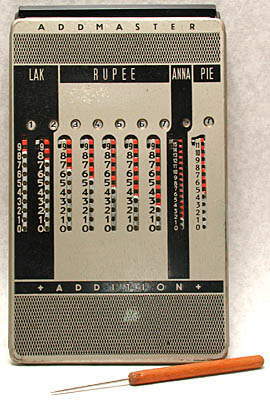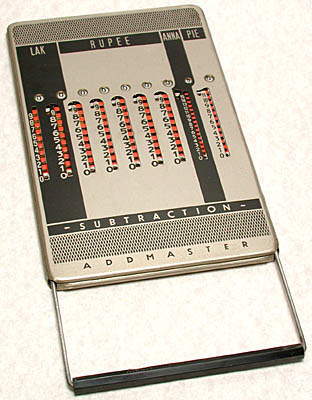Victoria Portrait Series
The first set of British India notes were the 'Victoria Portrait' Series issued in denominations of 10, 20, 50, 100, 1000. These were unifaced, carried two language panels and were printed on hand-moulded paper manufactured at the Laverstock Paper Mills (Portals). The security features incorporated the watermark (GOVERNMENT OF INDIA, RUPEES, two signatures and wavy lines), the printed signature and the registration of the notes. 

Rupees Ten Rupees Hundered
British India Notes facilitated inter-spatial transfer of funds. As a security precaution, notes were cut in half. One set was sent by post. On confirmation of receipt, the other half was despatched by post. 
Half note
This series remained largely unchanged till the introduction of the 'King's Portrait' series which commenced in 1923. 
Green Underprint - Rupees Five Hundred
Green Underprint - Rupees Five
Red Underprint - Rupees Fifty
Small Denomination Notes
The introduction of small denomination notes in India was essentially in the realm of the exigent. Compulsions of the first World War led to the introduction of paper currency of small denominations. Rupee One was introduced on 30th November, 1917 followed by the exotic Rupees Two and Annas Eight. The issuance of these notes was discontinued on 1st January, 1926 on cost benefit considerations. These notes first carried the portrait of King George V and were the precursors of the 'King's Portrait' Series which were to follow. 
Rupee One - Obverse 
Rupee One -Reverse 
Rupees Two and Annas Eight - Obverse
King's Portrait Series
Regular issues of this Series carrying the portrait of George V were introduced in May, 1923 on a Ten Rupee Note. The King's Portrait Motif continued as an integral feature of all Paper Money issues of British India. Government of India continued to issue currency notes till 1935 when the Reserve Bank of India took over the functions of the Controller of Currency. These notes were issued in denominations of Rs 5, 10, 50, 100, 500, 1000, 10,000. 
Rupees Fifty
Rupees One Thousand 
Rupees Ten Thousand
the Bank's issues to January 1938 when the first Five Rupee note was issued bearing the portrait of George VI. 
Rupees Five - First Note issued by Reserve Bank of India This was followed by Rs 10 in February, Rs 100 in March and Rs 1,000 and Rs 10,000 in June 1938. [/font][/size][/font]

Rupees One Hundred 
Rupees One Thousand
Rupees Ten Thousand
In August 1940, the one-rupee note was reintroduced, once again as a war time measure, as a Government note with the status of a rupee coin, 
Rupee One Obverse 
Rupee One Reverse 
Rupees Two
As an added security feature, the security thread was introduced for the first time in India. 
George VI Profile 
George VI Frontal
The George VI series continued till 1947 and thereafter as a frozen series till 1950 when post independence notes were issued.
Source : www.dctorrent.com





















